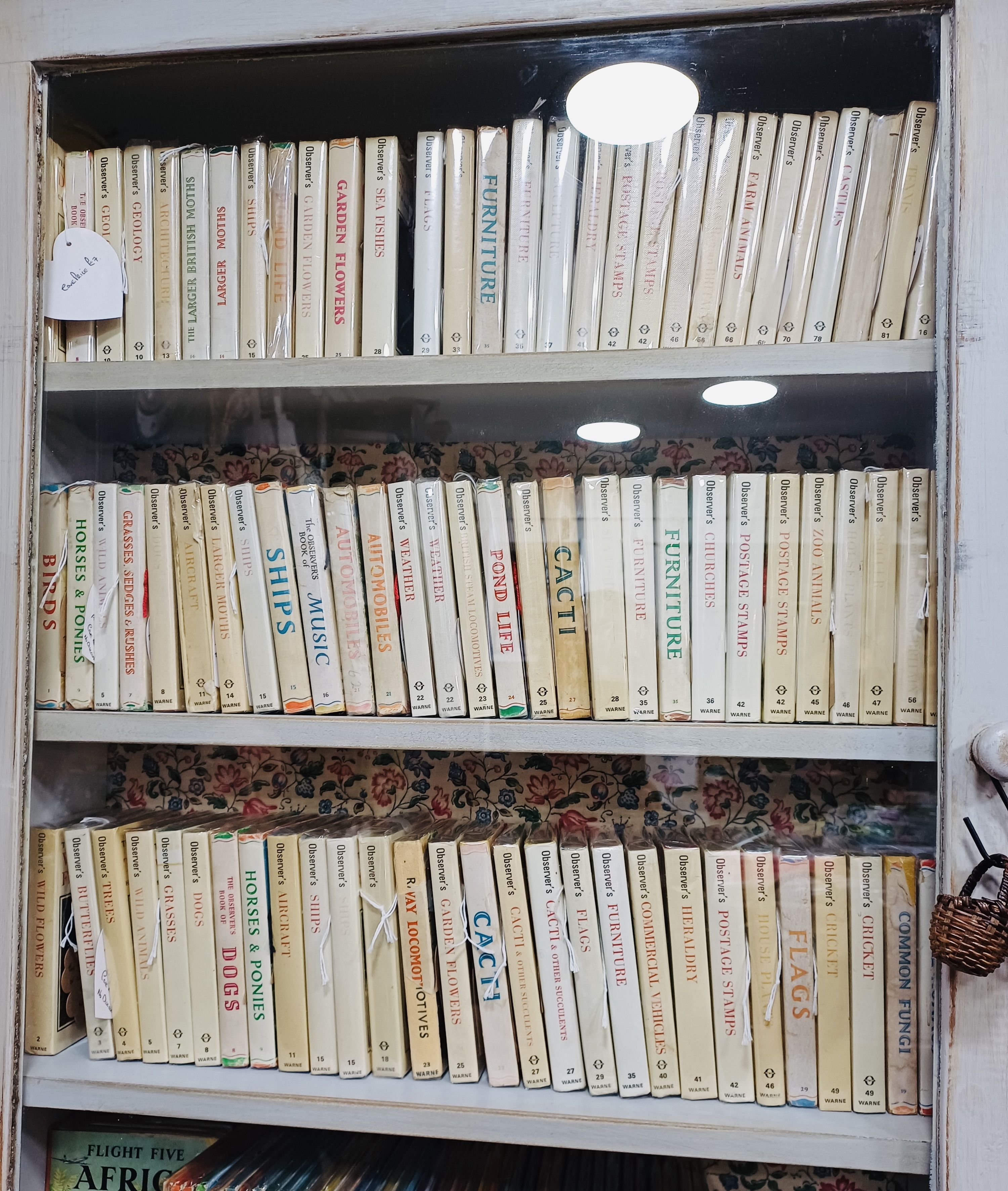IF Dúlra’d had a grand to spare, he would have bought the lot. Because as soon as he set eyes on the shelves full of old Observer books this week, his mind raced back to a time decades ago when he pored over every word in the tiny books, which are a mine of information.
The young Dúlra only ever got his hands on six of the books – they’re still on the shelf at home. Their contents have been overtaken over by the endless information available on the internet, but at the time they were like a treasure trove.
He had the one on birds of course – that was the first one ever to be published way back in 1937 – while his other five make up a hotchpotch of nature subjects: birds’ eggs, grasses, dogs, fly-fishing and pond life.
And in the same way archaeologists value discovering ancient graffiti over physical items like pottery, so the scribbles in Dúlra’s old books add to their worth. Older people would have scolded you for writing on books, but today those notes are more interesting to Dúlra than the text.
Many are records of birds and their nests that he can’t even remember finding – like the dipper chicks in Colin Glen in 1992, the 1980 brambling on Black Mountain or the waxwing way back on St Paddy’s Day 1972 on Glen Road – that was recorded in the hand-me-down Observer bird book by Dúlra’s big brother John, who also passed down his wide knowledge of all things nature. The tiny Observer books were a surprise hit, and after the initial bird book they were churned out. Wildflowers, butterflies, trees and wild animals followed within a year before it took an unconventional turn – focusing on aircraft, ships, even music. The last one, in 1982, was on opera of all things, and then came the 99th and final one – the Observer Book of Observer Books, which was a guide to the whole series. Even that was a hit and was reprinted six times!
The books Dulra found this week in a second-hand shop in Holywood were all in pristine condition and each one cost £10. That’s £990 for the whole set! Dúlra dipped his hand into his pocket and counted the change. He could afford one – but which one? He considered No.19, Fungi; No.70, Seashells; or No.95, Canals. And then he spotted it. This book was obviously aged – a sun-kissed brown – and on its cover was a stunning creature, the Jersey tiger moth. The simple beauty of the cover was stunning. There was no doubt about it – Dúlra’s coins were buying No.14, Larger Moths.
Moths are a mystery to most people, simply because they come out at night. But there is a small band of experts and during the 24-hour Bioblitz at Mullaghglass on the Belfast Hills a fortnight ago, traps were set and the sheer variety of moths caught was one of the highlights of the event. (The moths are released from the traps unharmed, of course.)
We all love butterflies, but when it comes to moths we are literally in the dark. Yet while Ireland has a butterfly for every county – the full Irish species list is just 32 – there are 1,500 moths here. Just 94 are contained in this wee book, but that’s more than enough for Dúlra to get started. The book, published in 1974, recommends people collect moth caterpillars and raise them at home – although it does point out that ‘latest’ advice notes the loss of natural habitats and that collecting them may not be such a good idea.
And how would you collect caterpillars? The book says you should just leave an open umbrella under an oak tree and shake the branches!
So Dúlra now has a new book on the shelf which gives an easy introduction to a subject so big that it can be overwhelming. He's not quite ready to hit the hills at night, but getting a good torch and searching the garden, wee book in hand, is as good a place as any to finally unlock the secrets of the 'feileacán oíche' – butterflies of the night.
•Reader Teresa Girvan has great pictures of a fox which is visiting her son’s home in Ardmore in the early hours of the morning. June’s long hours of daylight mean we often get to see things that are hidden the rest of the year. Dúlra’s advice: leave some food out for the fox and you can attract it right up to the door so you can enjoy it all year round!
•If you’ve seen or photographed anything interesting, or have any nature questions, you can text Dúlra on 07801 414804.








